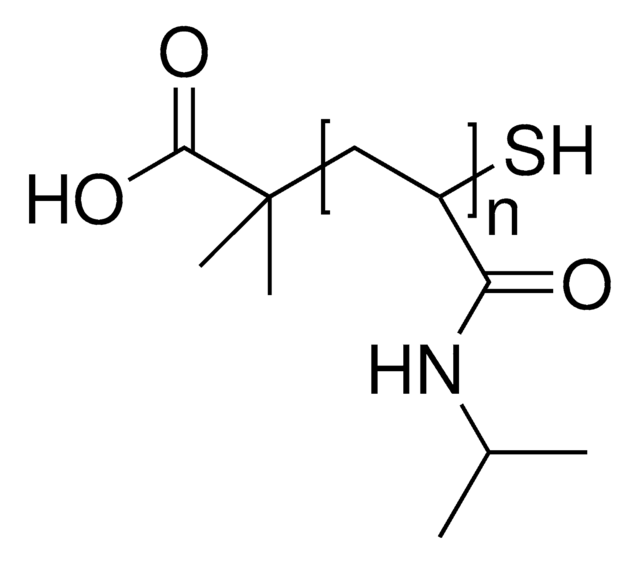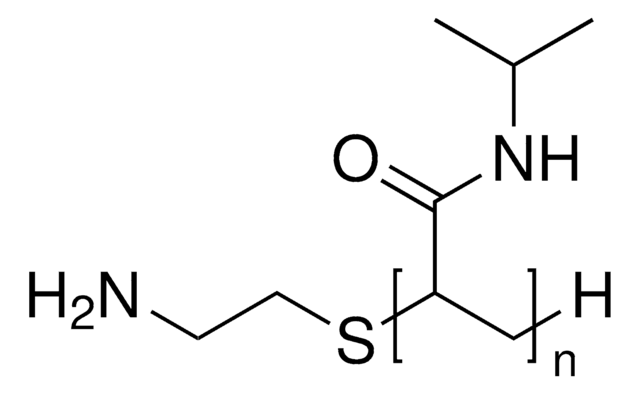PNIPAM is soluble in organic solvents, such as chloroform, acetone, methanol, and various other alcohols. It is also soluble in water, as long as the solution is kept reasonably cold. Please see the link below to review additional information regarding this compound:
https://www.sigmaaldrich.com/US/en/technical-documents/technical-article/materials-science-and-engineering/polymer-synthesis/poly-n-isopropylacrylamide
900188
Poly(N-isopropyl acrylamide)
NHS ester end functionalized, average Mn 5,000
Sinonimo/i:
PNIPAM, polyNIPAM
Scegli un formato
About This Item
Prodotti consigliati
Categorie correlate
Applicazioni
Codice della classe di stoccaggio
11 - Combustible Solids
Classe di pericolosità dell'acqua (WGK)
WGK 3
Punto d’infiammabilità (°F)
Not applicable
Punto d’infiammabilità (°C)
Not applicable
Scegli una delle versioni più recenti:
Certificati d'analisi (COA)
Non trovi la versione di tuo interesse?
Se hai bisogno di una versione specifica, puoi cercare il certificato tramite il numero di lotto.
Possiedi già questo prodotto?
I documenti relativi ai prodotti acquistati recentemente sono disponibili nell’Archivio dei documenti.
Articoli
Professor Mitsuhiro Ebara provides insights on several types of smart nanofiber mesh systems that have been explored for different drug delivery purposes.
-
Hi, What is a good solvent for this chemical?
1 answer-
Helpful?
-
Active Filters
Il team dei nostri ricercatori vanta grande esperienza in tutte le aree della ricerca quali Life Science, scienza dei materiali, sintesi chimica, cromatografia, discipline analitiche, ecc..
Contatta l'Assistenza Tecnica.







